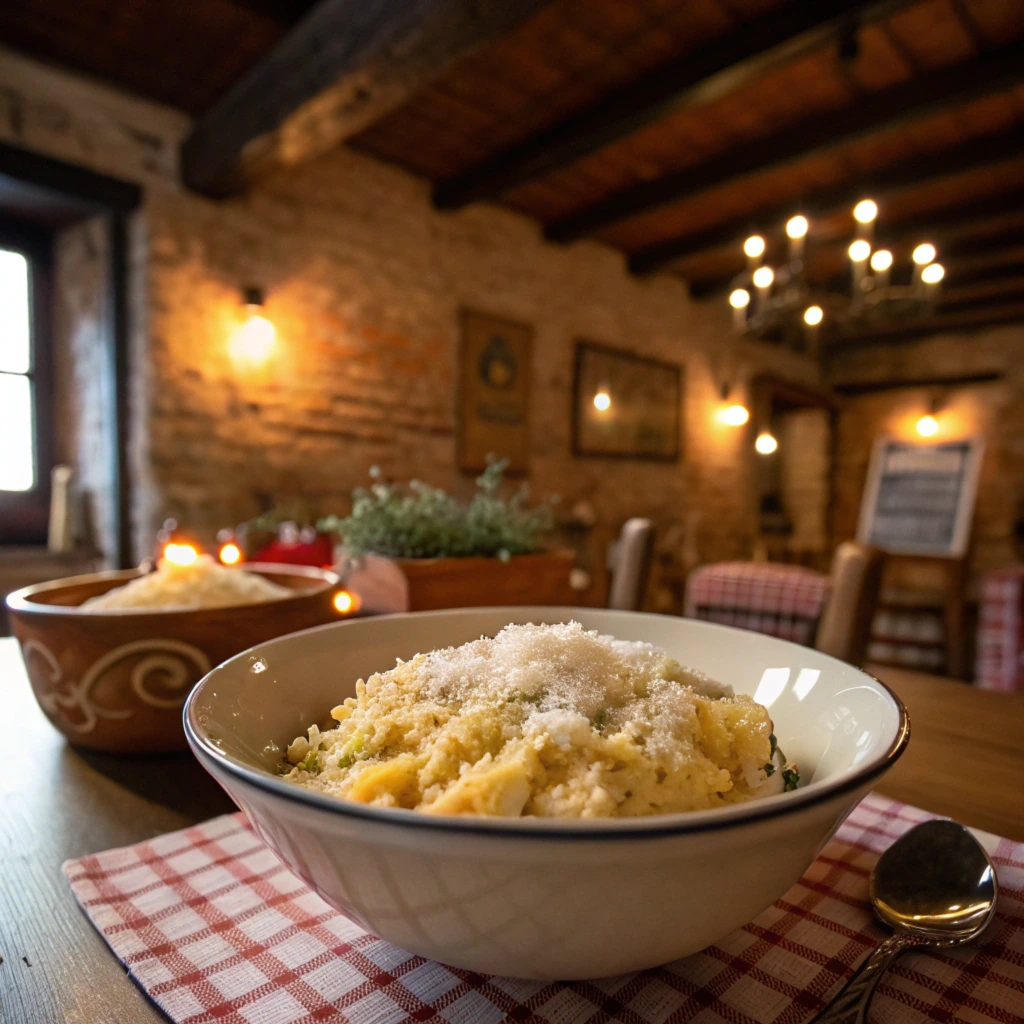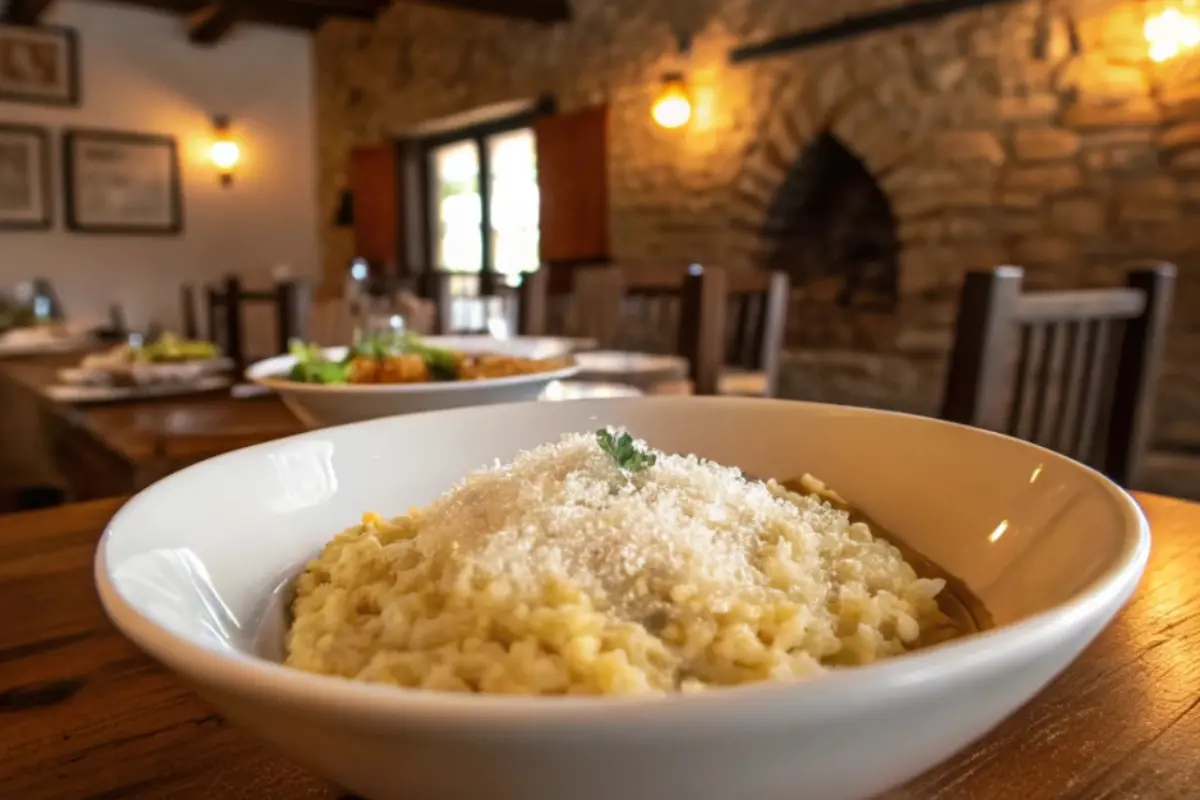There’s something magical about the tiny, star-shaped pasta called pastina. Many wonder, why does pastina make me feel better? Whether it’s a childhood memory, a cultural tradition, or simply the warmth it brings on a cold day, pastina makes you feel better because it’s the ultimate comfort food. This article explores why pastina makes you feel better, diving into its history, nutritional value, and the emotional connection it fosters. From its origins in Italian kitchens to its role as a soothing remedy when you’re under the weather, pastina proves why it makes you feel better. it’s much more than just food, it’s therapy.
The Origins of Pastina and Its Cultural Significance
The History of Pastina: Why It Brings Comfort
Pastina, meaning “little pasta” in Italian, has deep roots in Italian culinary traditions. Dating back centuries, this versatile dish has been a staple in Italian homes, particularly in regions known for simple, rustic cooking. Its small size made it ideal for soups, broths, and even as a meal for young children. Over time, pastina became synonymous with comfort, symbolizing nourishment and care in Italian households.
This humble pasta was traditionally made with durum wheat semolina, giving it a firm texture perfect for soups. Its popularity spread across Italy and eventually the world, but its heart remains in the kitchens of Italian grandmothers, or nonne, who passed down recipes filled with love.
Why Pastina Feels Like an Emotional Hug
Why do certain foods make us feel better? The answer lies in the emotional ties we build with them. For many, pastina represents childhood memories of being cared for during tough times. The warm, soft texture is reminiscent of being nurtured, creating a sense of safety and familiarity.
Italian traditions often include serving pastina to children and the sick, making it a dish deeply tied to love and healing. This cultural legacy reinforces its reputation as the ultimate comfort food, transcending generations and borders.
Pastina isn’t just pasta, it’s a story of love, tradition, and comfort. Let’s dig deeper into why it feels so good, starting with its surprising nutritional benefits.

Nutritional Benefits of Pastina: Why Is Pastina So Comforting?
Simple Ingredients That Make Pastina So Comforting
You might think pastina is just another pasta dish, but its simplicity is what makes it shine. Made from semolina flour or whole wheat, pastina is packed with complex carbohydrates, which are a primary source of energy. These tiny stars or grains are often paired with wholesome ingredients like chicken broth, butter, or Parmesan cheese, adding layers of flavor and nutrients.
One of the key reasons why pastina makes you feel better is that it’s gentle on the stomach. Unlike heavier pasta dishes, this light, easily digestible meal doesn’t weigh you down. Plus, when cooked in nutrient-rich broth, pastina makes you feel better by absorbing essential minerals like sodium and potassium. Why is pastina so comforting? This nourishment is especially beneficial when you’re feeling unwell, dehydrated, or low on energy. Its soothing qualities further explain why pastina makes you feel better, providing both comfort and recovery support during illness.
Why Pastina’s Gentle Texture Makes You Feel Better
Ever wondered why pastina is often the go-to dish when you’re sick? It’s all about its texture and digestibility. The small size and soft consistency make it easy for your digestive system to process, even when it’s upset. Whether you’re recovering from an illness or just need something mild, pastina provides comfort without any extra strain on your body.
When paired with ingredients like bone broth, pastina also delivers a dose of collagen, which supports gut health. This combination of nourishment and ease is one of the reasons why it’s a favorite for both children and adults. No wonder it’s often called “Italian penicillin!”
Pastina’s Role as a Comfort Food: Why It Makes You Feel Better
Psychological Comfort: Why Does Pastina Make You Feel Better?
There’s a reason why pastina is often associated with warm, happy feelings. it’s a dish rooted in nostalgia. For many, it’s tied to memories of being cared for by loved ones during childhood. The smell of simmering broth and the sight of those tiny pasta grains can instantly transport you to a simpler, safer time.
Foods like pastina activate our brain’s reward system by releasing serotonin, the chemical responsible for feelings of happiness and calm. Its mild, buttery flavor and warm texture amplify these effects, making it the ultimate comfort food when life feels overwhelming.
The Science Behind Why Pastina Soothes the Soul
Why does a bowl of pastina make you feel better, almost like a hug for your soul? Science has some compelling answers. Warm, carb-rich foods like pastina stimulate the release of serotonin, which helps improve mood and reduce stress. Why is pastina so comforting? Unlike sugary snacks that cause energy crashes, pastina makes you feel better by providing a steady, sustained source of energy. It keeps you grounded, satisfied, and emotionally balanced. This is just one of the many reasons why pastina makes you feel better both physically and emotionally.
Moreover, warm meals like pastina trigger the vagus nerve, which connects your gut and brain. This process promotes relaxation and helps your body recover from stress. So, whether you’re dealing with a cold or just need an emotional lift, pastina offers a scientifically-backed solution.
The combination of nutritional value and emotional comfort explains why pastina holds a special place in so many hearts and stomachs.
Pastina and Illness: Why Does Pastina Make You Feel Better When Sick?
Pastina as “Italian Penicillin”: Why It Heals You
It’s no accident that pastina has earned the nickname “Italian penicillin.” For generations, Italian families have relied on this simple dish to nurse loved ones back to health. Whether you’re battling a cold or recovering from a stomach bug, pastina often feels like the perfect solution. Why? It’s warm, easy to eat, and customizable with nutritious add-ons like broth, butter, or Parmesan cheese.
When served in chicken broth, pastina becomes a hydrating meal packed with electrolytes, helping to fight dehydration. The soothing warmth of the broth also eases sore throats and provides much-needed relief when your immune system is down. Italian grandmothers, or nonne, swear by its healing powers, and for good reason it works!
For a deeper dive into crafting the perfect pastina soup, check out this detailed recipe on how to make pastina soup.
How Pastina Supports Recovery and Comfort
When you’re sick, the last thing you want is a heavy meal that sits in your stomach like a rock. This is where pastina excels. Its light texture is gentle on your digestive system, making it an ideal choice for those recovering from illness or surgery. Plus, it’s versatile enough to suit almost anyone’s needs, whether you prefer it plain or enriched with nutrient-dense ingredients.
Beyond its physical benefits, pastina also provides emotional comfort. It’s not just a meal; it’s a reminder that you’re cared for, often served with love during moments of vulnerability. No wonder so many people turn to pastina during life’s tough times.
Variations of Pastina Recipes That Make You Feel Better
Traditional Italian Recipes: Why They Always Feel Right
The beauty of pastina lies in its simplicity, but traditional Italian recipes show how versatile this dish can be. Classic preparations often involve cooking pastina in chicken or vegetable broth, then topping it with a dollop of butter and a sprinkle of Parmesan cheese. Some regions in Italy add eggs for a richer texture, creating a dish known as pastina con l’uovo. It’s simple, filling, and oh-so-comforting.
Another beloved variation is pastina al latte, where the pasta is cooked in milk instead of broth. This creamy version is especially popular among children and makes for a perfect bedtime snack.
Modern Twists on Pastina
While the traditional methods are timeless, modern chefs and home cooks have reimagined pastina to suit various tastes and dietary preferences. For instance, gluten-free versions of pastina have become widely available, making this comfort food accessible to those with gluten sensitivities.
Creative spins include adding herbs, spices, or even blending in global flavors like miso or curry. For a hearty and nutritious twist, many people now mix in pureed vegetables or lean proteins like shredded chicken or tofu. These adaptations prove that pastina is more than just a traditional dish, it’s a versatile canvas for culinary creativity.
For more inspiration, check out our guide on what makes pastina special.
With its rich history, nourishing benefits, and endless versatility, pastina truly is a dish that connects us to comfort and care.
FAQs About Pastina
What Makes Pastina So Comforting?
One of the most common questions about pastina is why it brings so much comfort. The answer lies in its combination of simplicity and emotional connection. This tiny pasta absorbs the flavors of broth, butter, or cheese, creating a warm, hearty dish that satisfies both hunger and the soul. It’s not just the taste; it’s the nostalgia and care associated with every bite. For many, pastina evokes memories of being nurtured, adding a layer of emotional warmth to its physical comfort.
Additionally, the soft texture and mild flavor of pastina make it ideal for anyone feeling under the weather. Whether it’s a sick day staple or a childhood favorite, pastina delivers comfort like no other dish.
Is Pastina Healthy for Daily Consumption?
While pastina is often associated with comfort and recovery, many wonder if it’s suitable for daily meals. The good news is that pastina can be part of a balanced diet. When paired with nutrient-rich ingredients like vegetables, lean proteins, or healthy fats, it becomes a wholesome, filling option.
However, moderation is key. Since pastina is a carbohydrate-heavy dish, balancing it with proteins and fiber ensures you get a well-rounded meal. Adding herbs and spices can also boost the nutritional value without sacrificing taste.
Why Pastina Deserves a Place in Your Kitchen
A Timeless Comfort Food
There’s no denying the universal appeal of pastina. This tiny pasta is more than just a dish; it’s a symbol of care, warmth, and tradition. From its origins in Italian kitchens to its role in global culinary trends, pastina has proven its staying power. It adapts to any lifestyle, from quick weekday meals to soothing remedies on a sick day.
What makes pastina special is its ability to bridge the gap between generations. Whether it’s a recipe passed down from a nonna or a modern twist created in your kitchen, pastina brings people together. It’s comfort food at its finest.
Your Next Culinary Adventure with Pastina
Ready to make pastina part of your regular menu? Start experimenting with different flavors and ingredients to create a dish that’s uniquely yours. Whether you stick to traditional recipes or venture into new culinary territory, pastina offers endless possibilities. Its simplicity is its strength, allowing you to craft meals that are both nourishing and memorable.
For more recipe inspiration, check out our guide to creating the perfect pastina dish.
Pastina is more than just food, it’s an experience, a memory, and a warm hug in a bowl. Whether you need comfort, nourishment, or a simple meal, pastina has you covered. Explore its rich history and versatility in your own kitchen and discover why it continues to be a beloved staple worldwide.
The Future of Pastina in Modern Cuisine
Rediscovering Pastina in Today’s Kitchens
As food trends continue to evolve, pastina remains a timeless dish that adapts beautifully to modern tastes and lifestyles. Today, chefs and home cooks alike are rediscovering pastina’s versatility, using it as a foundation for innovative recipes. From gluten-free versions to vegan adaptations, pastina has proven it can meet the demands of diverse dietary needs.
This beloved comfort food is also making waves in high-end restaurants, where chefs incorporate pastina into gourmet creations. By pairing it with luxurious ingredients like truffle oil, lobster, or saffron, they’re elevating pastina beyond its humble beginnings. Yet, even with these modern twists, its comforting essence remains at the heart of every dish.
Why Pastina Will Always Be Relevant
What sets pastina apart in today’s fast-paced world is its ability to bring simplicity back to the table. In a time when complex recipes and extravagant ingredients dominate, pastina reminds us of the beauty in straightforward, heartfelt cooking. Its quick preparation makes it a go-to meal for busy families, while its nostalgic flavor keeps it a favorite for those seeking comfort.
Moreover, as more people prioritize food that nurtures both body and soul, pastina aligns perfectly with this movement. Its gentle, soothing qualities make it an ideal dish for self-care, offering a moment of warmth and relaxation in an otherwise hectic day.
With its rich heritage and endless adaptability, pastina continues to thrive in kitchens around the world. Whether you’re a traditionalist or an experimental cook, this tiny pasta holds infinite possibilities, proving that sometimes, the simplest things truly are the best. Embrace pastina in your own cooking and see why it remains a cherished dish for generations.

